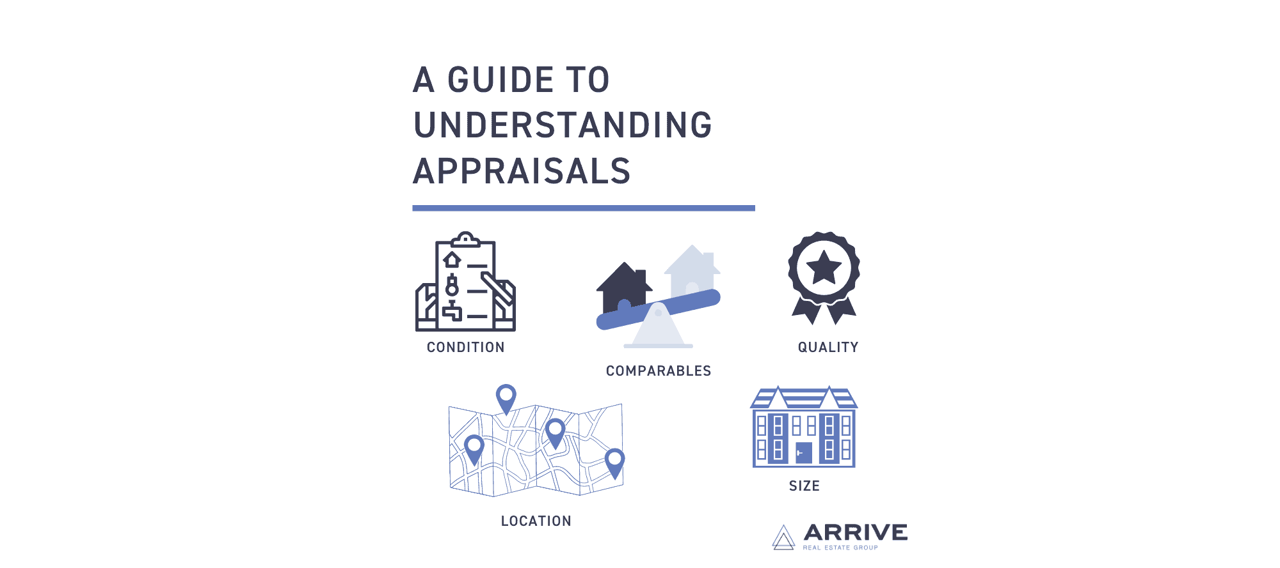A Guide to Understanding Appraisals
Real Estate

Real Estate

The home appraisal is essentially a value assessment of the home and property and is part of the closing process. Appraisals can be needed when you are purchasing a home and also if you are refinancing your current home. They are conducted by a certified third party and are used to determine whether the home is priced appropriately. In this guide to understanding appraisals, we will look at the different elements a certified appraiser uses to determine the value of the property.
The appraiser is most concerned with the condition and quality of a home and its features. Your home will be compared to recent sales of similar size and location to help assign a value to the home.
What is the surrounding area like? Homes near schools, shops or restaurants as well as those which provide easy commute access can increase in value based on their location. On the other hand, homes that are subject to deterrents such as airplane or train noise may be negatively affected.
During a home appraisal, the appraiser conducts a complete visual inspection of the interior and exterior of the home. They factor in a variety of things, including the home’s floor plan functionality, fixtures and condition of the property.
What is the size of the home? The appraiser will take their own measurements of the home to determine the actual square footage. The number of bedrooms and bathrooms as well as the square footage of the land the home sits on is also calculated in the appraisal.
What upgrades have been made to the property? An upward adjustment is generally made if the home has a pool, a view or a large yard.
How does your home compare to other homes that have recently sold? The appraiser will also compare the home to other similar homes that have sold within the last six months in the area. If you live in an area that has many homes with similar floor plans, it may be easier to compare. If your home is unique or truly custom, the appraiser may have to rely more heavily on some of the other elements to determine its value.
The final report must include a street map showing the property and the homes compared, photographs of the interior and exterior, an explanation on how the square footage was calculated, market sales data, public land records, and more.
After it is complete, the lender uses the information found to ensure that the property is worth the amount they are investing. This is a safe-guard for the lender as the home acts as collateral for the mortgage. If the buyer defaults on the mortgage and goes into foreclosure, the lender generally sells the home to recover the money borrowed.
For more information on this guide to understanding appraisals, please contact us. At Arrive Real Estate Group we are committed to helping our clients achieve their current and future real estate goals!
Stay up to date on the latest real estate trends.
You’ve got questions and we can’t wait to answer them.